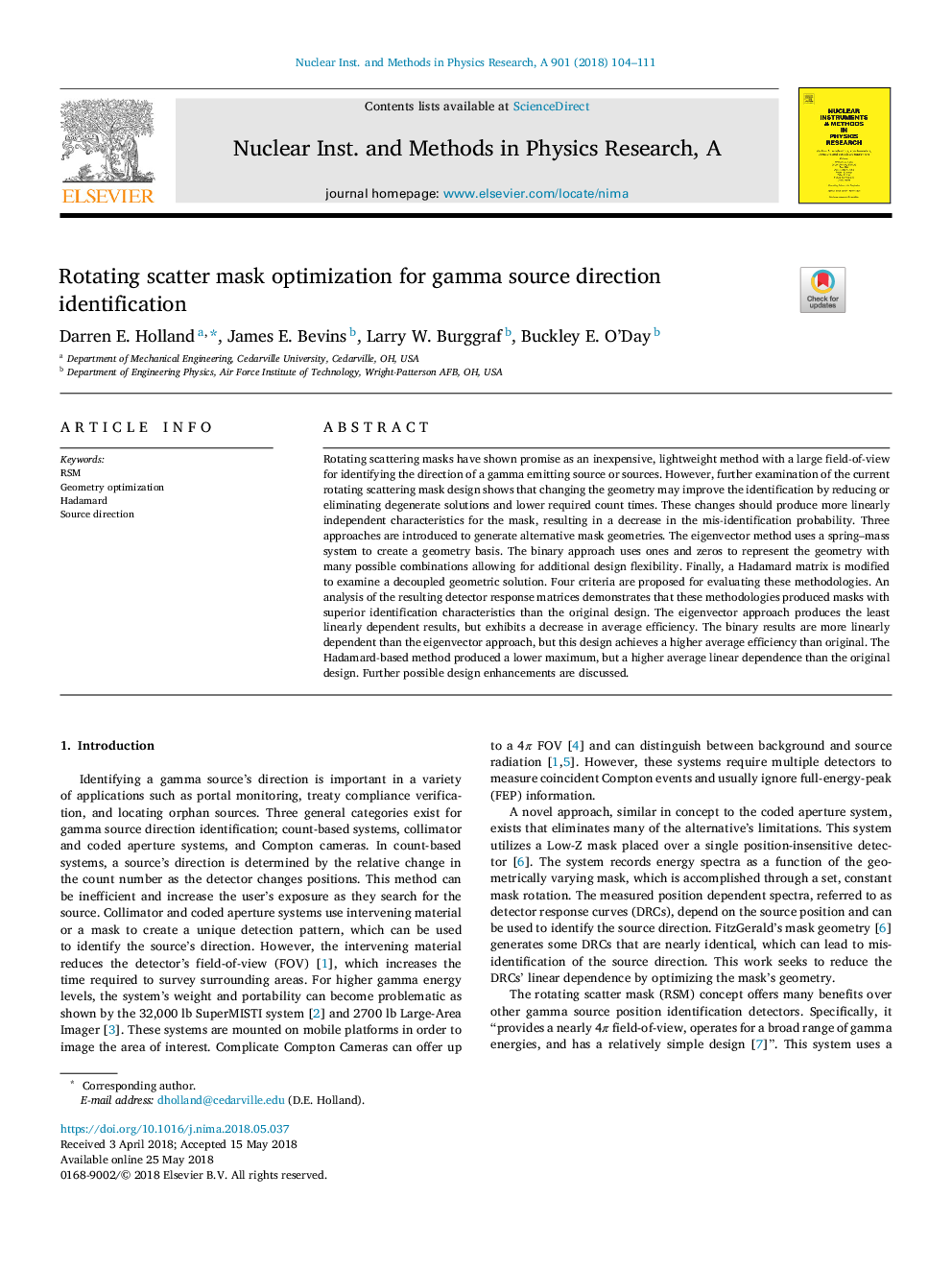| Article ID | Journal | Published Year | Pages | File Type |
|---|---|---|---|---|
| 8166065 | Nuclear Instruments and Methods in Physics Research Section A: Accelerators, Spectrometers, Detectors and Associated Equipment | 2018 | 8 Pages |
Abstract
Rotating scattering masks have shown promise as an inexpensive, lightweight method with a large field-of-view for identifying the direction of a gamma emitting source or sources. However, further examination of the current rotating scattering mask design shows that changing the geometry may improve the identification by reducing or eliminating degenerate solutions and lower required count times. These changes should produce more linearly independent characteristics for the mask, resulting in a decrease in the mis-identification probability. Three approaches are introduced to generate alternative mask geometries. The eigenvector method uses a spring-mass system to create a geometry basis. The binary approach uses ones and zeros to represent the geometry with many possible combinations allowing for additional design flexibility. Finally, a Hadamard matrix is modified to examine a decoupled geometric solution. Four criteria are proposed for evaluating these methodologies. An analysis of the resulting detector response matrices demonstrates that these methodologies produced masks with superior identification characteristics than the original design. The eigenvector approach produces the least linearly dependent results, but exhibits a decrease in average efficiency. The binary results are more linearly dependent than the eigenvector approach, but this design achieves a higher average efficiency than original. The Hadamard-based method produced a lower maximum, but a higher average linear dependence than the original design. Further possible design enhancements are discussed.
Keywords
Related Topics
Physical Sciences and Engineering
Physics and Astronomy
Instrumentation
Authors
Darren E. Holland, James E. Bevins, Larry W. Burggraf, Buckley E. O'Day,
